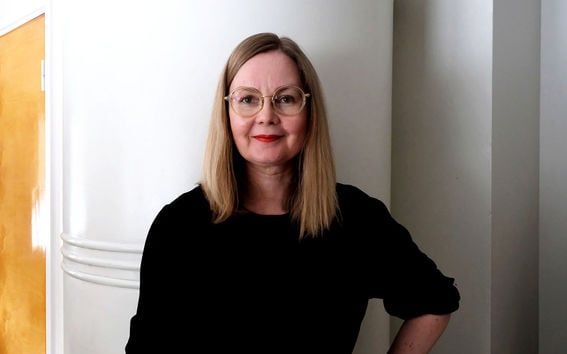‘Solo dwellers’ domestic spatial needs are rarely met in one-room apartments’

What is your research about?
‘I study working-aged solo dwellers’ domestic spatial needs and desires in the Helsinki Metropolitan Area in Finland. My topic has been studied relatively little in relation to the prevalence of living alone. In particular, there is a need for knowledge relevant for housing design as solo-living residents’ perceptions have not been studied enough. Therefore, there is a danger that their housing is interpreted in a framework defined by stereotypes and outdated mental images. My research therefore emphasizes the importance of resident data, which is also at the heart of housing design.
The study focuses, for instance, on the experienced shortage of space that has not been previously covered in terms of solo-living residents. This is likely due to the fact, that a household is in general considered living in an overcrowded dwelling when the number of residents exceeds the number of rooms thus signifying that solo dwellers are kind of marginalized.
The aim of my research has been to produce information that can be used in housing design and related decision-making. In addition to traditional methods such as interviews and surveys, I present a design game that explores the connection between a private housing unit and domestic spaces used together with other non-household residents.
What’s important in it?
’My key claim is that the size of one-person households mirrors weakly domestic spatial needs. The survey results marked that especially solo households are in the need of more space. This is connected to the residents’ wellbeing, which ought to be in the heart of housing discourses.
Architect Anne TervoI think we should first listen to the residents, and only after that make decisions regarding the future of housing."
In particular, a one-room apartment with an open-plan kitchen, i.e. studio apartment, typical in contemporary housing production, is rarely suitable for the target group of this study. Focusing on the interviewees living in one-bedroom apartments, it can be said that their domestic spatial needs are mostly located in the missing room, or separate kitchen. It is also noteworthy that the shortage of space is connected to this apartment type.
Based on the results, I suggest a one-room apartment with a separate kitchen to be returned to housing production. This type of housing was built in Helsinki at the beginning of the last century. The target group was, of course, another at the time. My results also deal with the established apartment type categories that proved to be too abstract and generic. Therefore, it would be important to include kitchen type in studies when interested in knowledge that is relevant for housing design and related decision-making processes.
Through kitchen desires and larger apartments, also prospects to the social dimension of living alone open up: also for solo dwellers, the home is a place for various social encounters. On the other hand, they have a need for privacy, which again feeds the proliferation of solo living. These are features to consider when designing housing options based on shared spaces, for example. By making a distinction between communality and the shared use of space, the theme of sharing can be caught up in a way that is meaningful to residents.’
What can it lead to?
‘A good start would be an open discussion about solo dwellers’ domestic spatial needs. I think we should first listen to the residents, and only after that make decisions regarding the future of housing. I understand that housing has to be affordable and available; however, this should not mean that apartment size decreases up to the point where their usability suffers.
My conclusions reflect the results in the current state of housing production in the Helsinki metropolitan area. We know that the results of housing studies are poorly implemented into practice as the changes are automatically expected to result in extra costs. Thus, I address the conclusions to the decision-makers who can set the qualitative targets sufficiently high.
I suggest that a demand for multi-functionality should be considered as a characteristic steering the design of new apartments as well as the renovation of the existing building stock. While the means are many, multi-functionality provides flexibility in terms of solo dwellers’ varying domestic spatial needs as well as sudden changes. However, the implementation models of a multi-purpose living space should be left to the designers.’
Tervo defended her thesis Domestic Space for Solo Living – Changing Patterns in the Helsinki Metropolitan Area at Aalto University 19 March, 2021.
Read more news

DeployAI Partners Gather for Heart Beat Meeting in Helsinki
The European DeployAI project's partners gathered for the Heart Beat meeting hosted by Aalto University Executive Education in Helsinki.
Get to know us: Associate Professor Maria Sammalkorpi
Sammalkorpi received her doctorate from Helsinki University of Technology 2004. After her defence, she has worked as a researcher at the Universities of Princeton, Yale and Aalto.
Aalto computer scientists in ICML 2024
Computer scientists in ICML 2024